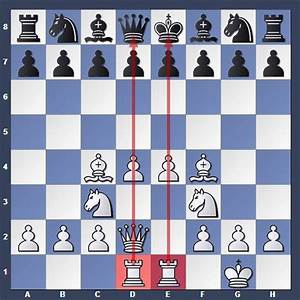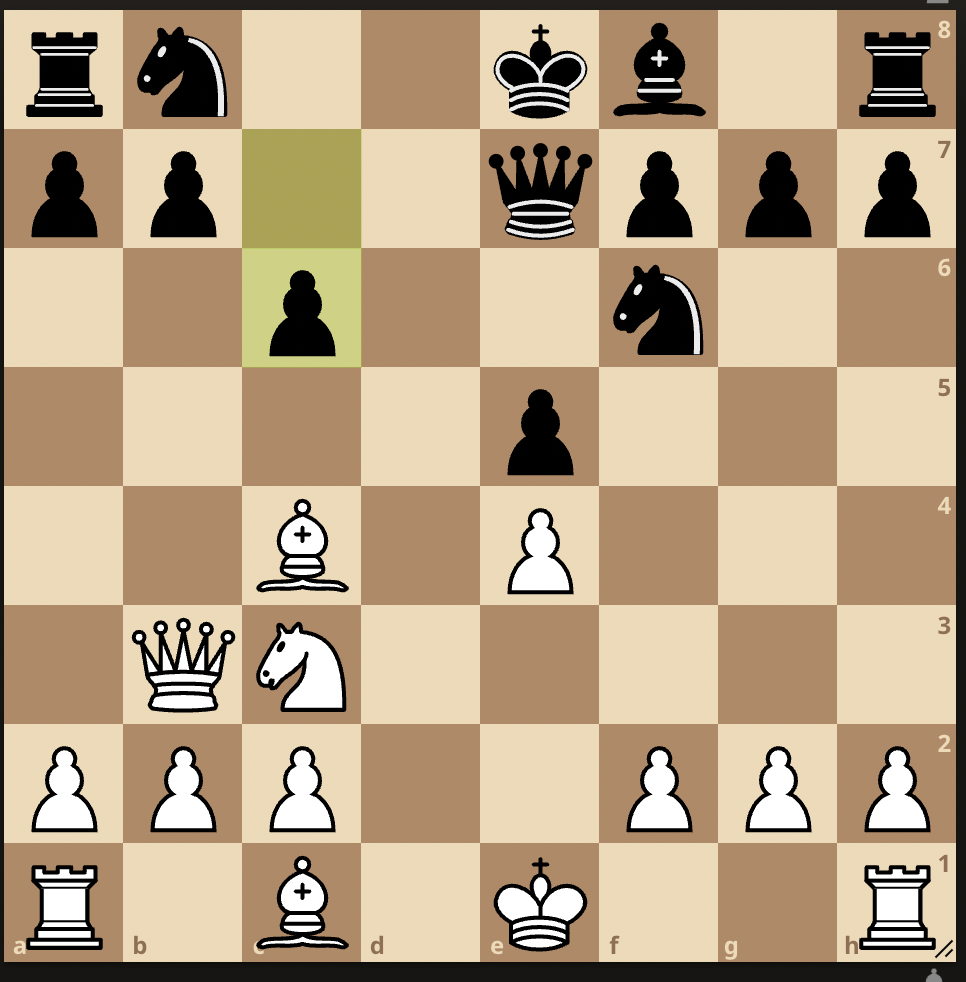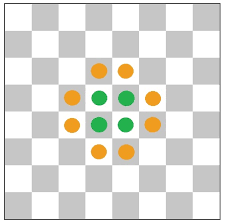
By CEO National Master Evan Rabin

Every employee needs a job ; they cannot all stay at home. Well during COVID-19, they all did but they have all remained productive on a million Zoom calls. In the opening, the first 10-15 moves of a game, one should castle, develop all his pieces and castle.
One castles to mitigate risk by making his king safe. On our last Annual Make a Difference Teaching Chess Africa Trip, Luis Cuerdo compare to the Lion King, where King Mufasa remains safe while others roam around. In a large majority of games, both players will castle within the first 5-10 moves and let the other pieces work.
To develop pieces, simply means to activate them. One should develop his pieces to the most optimal squares where they are most valuable. While a knight is worth three points, it does not live up to that number when sleeping on the first or eight rank.
Let’s consider this position from the famous 1858 Paul Morphy vs Duke of Brunswick and Count Isouard game:

When I ask beginners what white should play here, they often correctly say they would like to develop their dark-squared bishop; however many will pick the sub par move 9. Be3, which allows 9… Ng4 and a decent amount of counterplay. It is much better for white to play 9.Bg5, pinning the knight on f6 to the queen on d8.
When pieces are in the center, they have more control.

A knight in any corner, such as h1, controls two squares. In a central rank but side file, such as at h4, it controls four squares. In the center, such as at d4, it controls eight squares. That is four times more squares then when it was in the corner. In Business on the Board, our 154th Podcast Episode Jim Egerton writes about how Fedex is headquarted in Memphis, Tenesseee, which is near the center of the United States and allows packages to easily travel north, south, east and west. Similarly, in chess. when pieces are deployed in the center, they can easily travel to the queenside or kingside quickly.
In the opening, players should not be too creative. If one follows basic opening principles and thought process, he could come an intermediate player (1400+) fairly quickly. Every single move in the opening should relate to at least one of the following:
Castle
Develop
Center
While it is imporant to castle, develop and control the center as quickly possible, it is also important to consider one’s opponent moves. Several times I’ve seen beginners blunder pieces just becuase they were so set on developing or castling, that they did not see their oppponent made a threat. Guidelines are not the same as rules; one needs to think on his feet.


It was an interesting article, thank you
Thanks for sharing your information
Epic adventures await – start your journey today.
With high-definition graphics and immersive gameplay, our online casino games will transport you to a world of excitement and intrigue.
Be the next jackpot winner at our online casino!
Join the ranks of legendary heroes!
Epic adventures await – start your journey today.
Dalam versi modifikasinya, semua fitur premium yang biasanya hanya bisa dinikmati setelah membayar biaya berlangganan telah dibuka sepenuhnya, sehingga pengguna bisa mengakses seluruh koleksi tanpa batas. Tidak hanya itu, aplikasi ini juga menawarkan pembaruan konten yang cepat, sering kali menghadirkan episode terbaru hanya dalam hitungan jam setelah rilis.
I trust their expertise and professionalism to handle complex tasks with precision and care every time.강남쩜오 With a strong focus on detail and client needs, this team delivers results that truly make a difference.
Tidak hanya itu, aplikasi ini juga menawarkan pembaruan konten yang cepat, sering kali menghadirkan episode terbaru hanya dalam hitungan jam setelah rilis. [Link deleted]
Surrey Traders is the company to call for residential and commercial plumbing services in Woking. WE PROVIDE OVER 10 YEARS OF EXPERIENCE Our staff of professionals have over 10 years of plumbing experience and can take on any piping job, from big to small. We provide an array of services such as sewer and drain cleaning, plumbing repair, new fixtures and new plumbing installation you can <a href="[Link deleted]
<a href="[Link deleted]is the best free web proxy service, which will let you unblock the websites by just a click fast, secure, and anonymous browsing. Users also use Proxyium for their geoprotection: simply put, they can access infiltrable sites while keeping their IP hidden! Whether you are at work, school, a university campus orwherever you go around the world with our free webproxy. Using the service, it is possible to surf the web on private and public computers without any additional configuration or software requirements.
When daily prayers, quotes, and wishes are combined, they create a balanced approach to emotional and spiritual wellbeing. Prayers nurture faith and inner calm, quotes sharpen perspective and motivation, and wishes enhance human connection and empathy. This combination supports mental clarity, emotional resilience, and positive interaction. Individuals who adopt this routine often experience improved mood, reduced stress, and stronger relationships.
This was incredibly insightful! We analyzed
<a href="[Link deleted]ialah alat muat turun video TikTok yang paling banyak dimuat turun di internet. Anda bebas untuk memuat turun video Musically menggunakan pemuat turun TikTok kami. Muat turun video TikTok kegemaran anda dengan kualiti tertinggi dalam format MP4 dengan kualiti HD tanpa had serta pilihan resolusi 4K.